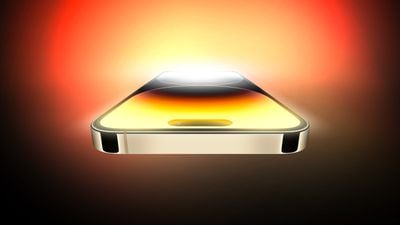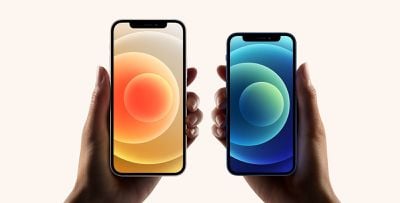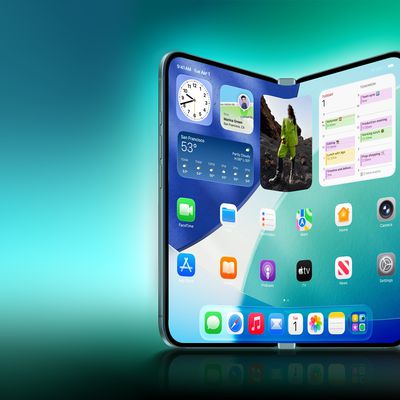Last year, Apple tweaked iPhone 16 Pro screen sizes to make them bigger than 2023's iPhone 15 Pro models, and this year we are also expecting a change in the size of the displays in the iPhone 17 lineup. Here's what we know.

Standard iPhone 17
Apple could introduce a new display size for the standard iPhone 17 model in 2025. The iPhone 17 could measure in at 6.3 inches, up from 6.1 inches, which would make it the same size as the current iPhone 16 Pro. At 6.3 inches, it would be in between the size of the 6.1-inch iPhone 15 and the 6.7-inch iPhone 15 Plus. However, this year there may be only one non-Pro model in Apple's lineup (see below).
iPhone 17 Plus – iPhone 17 Air
Rumors suggest that Apple plans to eliminate the Plus model in 2025 due to subpar sales and replace it with a an ultra-slim iPhone 17 that could come with an "iPhone 17 Air" moniker. While the iPhone 16 Plus has a 6.7-inch display, the iPhone 17 Air is expected to fall somewhere between the iPhone 17 Pro and 17 Pro Max in size. Separate rumors have targeted 6.55 inches, 6.6 inches, and 6.65 inches as the display size that Apple has settled on, which would make it smaller than the iPhone 17 Pro Max, but larger than the 17 Pro.
iPhone 17 Pro & Pro Max
Apple is currently not expected to change the size of its Pro models next year, having already tweaked them this year in the iPhone 16 series. That means the iPhone 17 Pro and iPhone 17 Pro Max should measure roughly 6.3 inches and 6.9 inches, respectively. However, according to The Information, the iPhone 17 Pro and iPhone 17 Pro Max will have "significant design changes" that go beyond display size. These changes are said to include the use of aluminum for the frame instead of titanium, a half-aluminum, half-glass backing rather than an all-glass back, and a pill-shaped or rectangular camera bump.
| iPhone 16 Models (2024) | iPhone 17 Models (2025) |
|---|---|
| iPhone 16: 6.1 inches | iPhone 17: 6.3 inches |
| iPhone 16 Plus: 6.7 inches | iPhone 17 Air: 6.5-6.6 inches |
| iPhone 16 Pro: 6.3 inches | iPhone 17 Pro: 6.3 inches |
| iPhone 16 Pro Max: 6.9 inches | iPhone 17 Pro Max: 6.9 inches |
New Display Technology

120Hz ProMotion Across the Lineup
Apple intends to expand ProMotion to all iPhone models in 2025, allowing all models to ramp up to a 120Hz refresh rate for smoother scrolling and video content when necessary. Previously, only "Pro" models in Apple's iPhone lineup have had the feature. Notably, ProMotion would also enable the display on the iPhone 17 and iPhone 17 "Air" to ramp down to a more power-efficient refresh rate as low as 1Hz, allowing for an always-on display that can show the Lock Screen's clock, widgets, notifications, and wallpaper even when the device is locked.
More Power-Efficient Screens
A recent unconfirmed rumor suggests that Apple's upcoming iPhone 17 Pro models may feature a new display technology known as Low-Dielectric TEE (Transmission Electrically Enhanced). The term likely refers to the use of materials with a low dielectric constant in the display's thin-film encapsulation (TFE). While it's not yet clear what this specific innovation offers, incorporating low-dielectric materials can in general reduce signal interference and energy loss, leading to more efficient power usage and potentially longer battery life.
Scratch Resistant Anti-Reflective Display
The iPhone 17 will feature an anti-reflective display that is more scratch-resistant than Apple's Ceramic Shield found on iPhone 15 models, according to one rumor. The outer glass on the iPhone 17 is said to have a "super-hard anti-reflective layer" that is "more scratch-resistant." It's not clear whether Apple is planning to adopt the Gorilla Glass Armor that Samsung uses in its Galaxy S24 Ultra, but the description of Corning's latest technology matches the rumor. That said, it's worth keeping in mind that the new iPhone 16 Pro models have the latest-generation Ceramic Shield, which has an advanced formulation that is 2x tougher than glass on any other smartphone, according to Apple.
Smaller Dynamic Island
Apple's iPhone 17 Pro Max will feature a significantly narrower Dynamic Island, thanks to the device's adoption of a smaller "metalens" for the Face ID system, claims Haitong's Jeff Pu. While a traditional iPhone camera has curved lenses that redirect light towards the image sensor, a metalens is a thin and flat lens with microscopic patterns etched onto it that can focus light more precisely. Assuming this results in a narrowed Dynamic Island, it would be the first time that Apple has changed the feature since it debuted on the iPhone 14 Pro in 2022.
iPhone Models Past: Notable Size Changes

- The Original iPhone to iPhone 4S (2007-2011): The first iPhone, launched in 2007, featured a 3.5-inch screen, a size that Apple maintained up to the iPhone 4S. This screen size was considered quite large at the time compared to many contemporary phones.
- iPhone 5 to iPhone 5S/SE (2012-2016): With the iPhone 5, Apple increased the screen size to 4 inches. This change addressed the growing consumer trend towards larger screens, allowing for an improved viewing experience while maintaining a comfortable grip.
- iPhone 6 and 6 Plus (2014): A significant change came with the iPhone 6 and 6 Plus, featuring screen sizes of 4.7 inches and 5.5 inches respectively. This move was a response to the burgeoning market of larger smartphones or "phablets." It marked Apple's foray into a segment that competitors like Samsung had been capitalizing on.
- iPhone X (2017): With the introduction of the iPhone X in 2017, Apple shifted to a new design paradigm, reducing bezels and introducing notch-based displays. The iPhone X had a 5.8-inch screen, which was a middle ground between the two previous sizes.
- iPhone XR (2018): The iPhone XR retained the new design profile as the iPhone X but upped the display size to 6.1 inches.
- iPhone XS Max (2018): The iPhone XS Max was the first "Max" model Apple released, featuring a 6.5-inch display, making it larger than any previous iPhone model.
- iPhone 12 Pro Max (2020): The iPhone 12 Pro Max featured a 6.7-inch Super Retina XDR display, making it once again the largest iPhone ever at the time of its release.
- iPhone 12 mini & iPhone 13 mini (2020-2021): The iPhone 12 mini was introduced in 2020, and marked the first time since the original iPhone SE that Apple released a new model specifically designed to be smaller and more compact. Featuring a 5.4-inch screen, it catered to users who preferred smaller, more manageable phones that could be easily used with one hand. The iPhone 13 mini continued the trend, however reports and market analysis indicated that the overall demand for such a device was relatively low compared to Apple's larger models, and Apple has not replicated the option in iPhone lineups since.
- iPhone 15 Pro to iPhone 16 Pro (2023-2024): Apple this year introduced the iPhone 16 Pro and iPhone 16 Pro Max, featuring larger displays of 6.3 inches and 6.9 inches, respectively. Up from the 6.1 and 6.7-inch respective sizes of the previous iPhone Pro and iPhone Pro Max models, the current devices also boast thinner bezels, enhancing the viewing experience without significantly increasing the device's overall size.
For everything we know about the iPhone 17 series, be sure to check out our dedicated roundup.






















